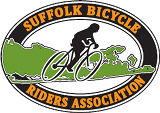- Rides
- Ride Statistics
- Join/Renew SBRA Now
- NEW to SBRA?
- Forums
- Recent Posts -See what's NEW
- Rolling Wheels Newsletters
- Bike Shop Program
- Other Rides & Events Calendar
- About SBRA
- Contact SBRA
- General Information
- Be a Ride Leaders
- Ride Leader Guidelines
- SBRA COVID Guidelines
- SBRA Club Store
- Photo Gallery
- Recent Photos
- Submit Pictures
- Blogs
- Blog Reader
- FAQ
Main menu
You are here
Some helpful information ...
In a crash? What to do
If you’ve been riding with SBRA for even a short time, you know that getting ready for a ride includes some preparation. You would not want to leave without your helmet, some liquid for hydration, snacks, a spare tube, proper clothing, etc. Most of us, however, do not properly prepare for a crash. Since crashes are rare, even if you’ve read and learned what to do in a crash, it is likely that you wouldn’t remember everything. Being prepared for a crash is now a click away.
The New York Bicycle Coalition (NYBC) website lists what to do in a crash, https://nybc.net/nys-bike-law/in-a-crash-2. You can use the below App which contains “what to do in a crash” instructions like the website. The App also has tools to record information, take photos, make notes and more.
For those with iPhones, the Bike Crash App, by Flanzig and Flanzig, LLP, www.NewYorkBikeLawyers.com, is ideal. It includes a “NEW CRASH” link to record information about the other driver, witnesses, police, crash location and weather. Other links on the App remind you to take photos, make notes, locate the nearest hospital and find a nearby bike shop, as well as, what to do after a crash.
It is particularly important that ride leaders and those who SAG on the Montauk Century and BBB to have the “what to do in a crash” procedures handy.
Unfortunately, I was unable to find a bike crash app for Android users. The Flanzig and Flanzig , LLP office has provided SBRA with their “The Bike Crash Card,” listing what to do in a crash. Cards are available at our monthly SBRA general meeting.
Paul Miklean, SBRA Education and Safety Director
_____________________________________________________________________
Helmets
Paul Miklean, SBRA Education and Safety Director
I find it maddening when I see a parent and child riding their bicycles, with the child wearing a helmet and the parent going without one.
Statistics
____● 2009: 90% of bicyclist killed in the United States were not wearing helmets.
____● 2013 NYC study:
________○ Cycling, the top sport for head injuries.
________○ 75% of all fatal bike accidents involved a head injury.
As such, it’s a no-brainer (pun) that SBRA requires a helmet on club rides, however, MOST BIKE HELMETS ARE WORN IMPROPERLY, making proper helmet use a critical safety concern.
NHTSA (National Highway Traffic Safety Administration)
Fitting a Bicycle Helmet, https://www.youtube.com/watch?v=0yzSwxWIJTk
____● Wearing a bicycle helmet can reduce head injury by 85%.
____● Adjust it before every ride.
____● Buying new helmet:
________○ Be sure they are CPSC (U.S. Consumer Product Safety Commission) certified.
________○ If older helmet, be sure it is SNELL (Snell Foundation) or ANSI (American National Standards Institute) approved.
Step 1: Sizing:
____● Measure head and choose a helmet to fit.
____● Adjust the sizing pads (inside the helmet) and fitting ring (back of helmet) for a comfortable fit without any rocking from side to side.
Step 2: Position: Helmet should sit level on head with no more than 1 or 2 finger widths above the eyebrow.
Step 3: Buckle: Adjust the lengths of the straps so the buckle is centered under the chin.
Step 4: Side Straps:
____● Adjust the slider on both straps to form a V-shape under and slightly in front of the ears.
____● Lock the slider if possible.
Step 5: Chin Straps:
____● Buckle the chin strap and tighten it to make it snug.
____● No more than 1 or 2 fingers should fit under the strap.
Double Check:
____● Make sure that the helmet is secure and doesn’t rock back and forth.
____● If a big yawn doesn’t pull down on your head, refer back to step 5 and tighten the chin strap.
If you still can’t get the helmet to fit, try another one.
Remember, a helmet can only protect your head if you wear it each time you ride.
If you’re in a crash or outgrow your helmet, replace the helmet immediately or you won’t be protected.
Most manufacturers now recommend that helmets be replaced after 5 years.
SBRA is a member of bicyclelongisland.org.
Thank you for visiting the SBRA Website. PS: best viewed in all browsers, but IE -- sincerely, your Webmaster.
Please send comments & questions about the SBRA site to the SBRA-Webmaster.

